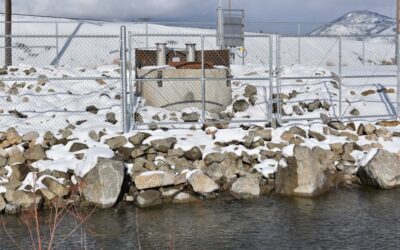By Matt Vincent Right now, everything is seemingly within the iron grip of the novel coronavirus/COVID-19 pandemic. Our daily lives have been redefined by the government’s response. As of Tuesday, April 15, Montana has 404 confirmed cases, 50 cumulative...
Water discharged from Butte Mine Flooding site, Including the Berkeley Pit, for the First Time
By Tim Hilmo, Project Manager, Atlantic Richfield Company With minimal headlines, treated water was discharged from the Butte Mine Flooding site to Silver Bow Creek for the first time starting on September 30, 2019. Water from the Berkeley Pit is being treated at the...
Pitwatch.org Reimagined
Berkeley Pit August 2018. Photo by Kayla Lappin, Clark Fork Watershed Education Program. Pitwatch.org Reimagined I remember opening my first edition of PitWatch at my grandpa and grandma Lester’s dining room table as an 11-year old in 2002. The publication in those...
Study details slope stability
The rate of rise of water levels in the Berkeley Pit and connected monitoring points is affected by many factors, including rain and snowfall and occasional ‘sloughs’ or ‘slumps’ of material from the Pit’s sidewall slopes. The most recent slough occurred on February...
Water level rising more slowly than originally projected
Since the Berkeley Pit was designated as a Superfund site in the 1980s, things have gone largely as expected. In one instance the site remedy has proceeded at a faster pace than mandated in the 1994 Record of Decision (or ROD, available in its entirety here). The ROD...
Plan for treatment technology assessment
The guiding documents for Pit management require ongoing assessment and evaluation of the Horseshoe Bend Water Treatment Plant and the technology used to treat contaminated Pit water until several years prior to full-scale implementation. That implementation is...





